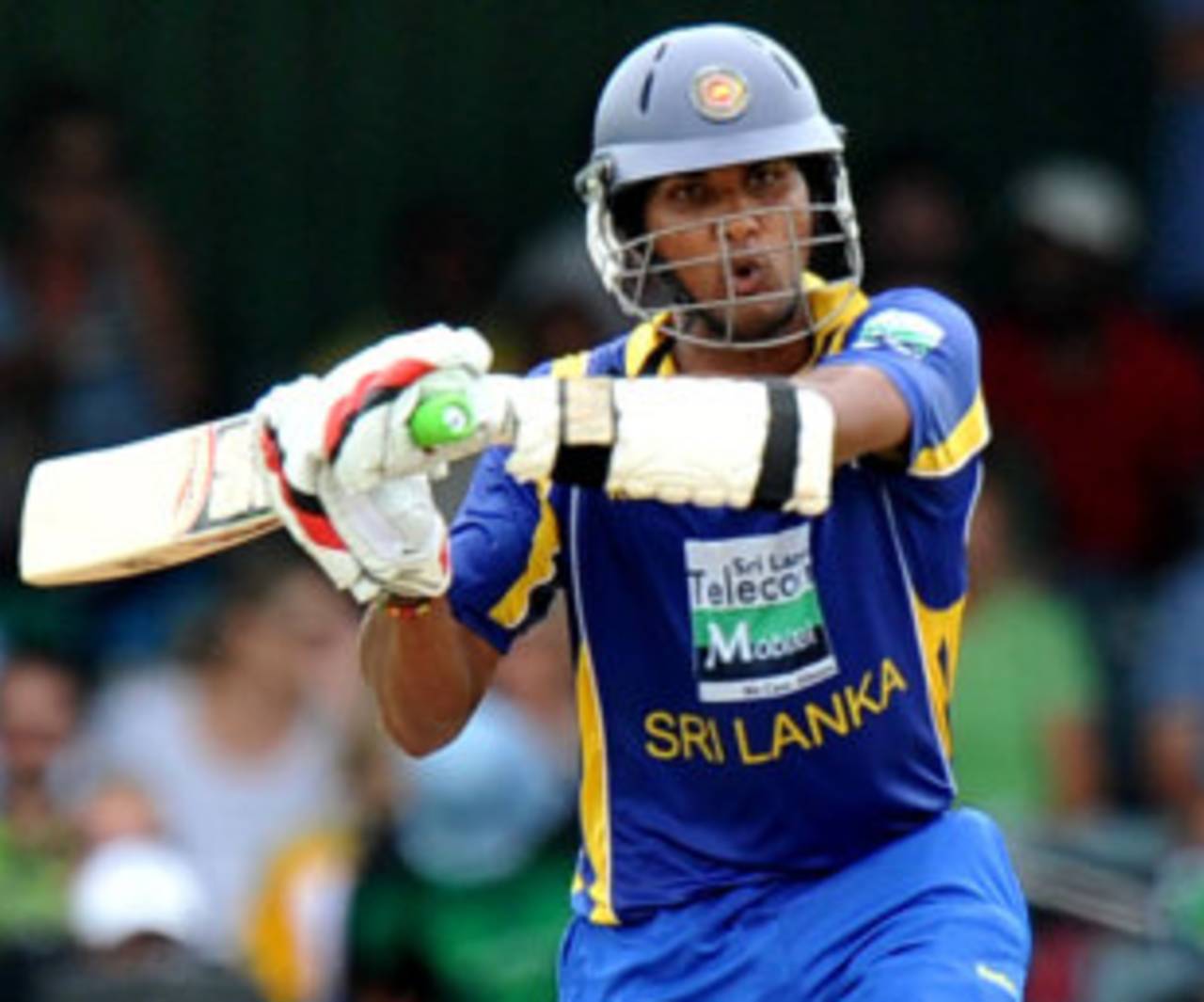Sluggish match a return to old-school ODI cricket
A lifeless low-scoring match in East London did nothing to dispel the criticisms of 50-over cricket
Firdose Moonda at Buffalo Park
14-Jan-2012

Dinesh Chandimal's 92 was the product of hard work, rather than flash and flair • AFP
Keen to time-travel back to the late 1980s? Come to East London. Everything from bad hair to mozzarella music exists here in all the glory it did more than 20 years ago. On Saturday, also present was the 1980s ODI, the one that has always cowered in the shadow of Test cricket and then faced the guillotine when its spunkier cousin, Twenty20, came along.
The old-school ODI still exists, and when it makes an appearance the argument that 50-over cricket is outdated surfaces with it. If the 2011 World Cup added years to ODI cricket's life, the match in East London confirmed why it is still an endangered species, one that probably does not deserve protection. Mediocrity seldom does.
Sri Lanka rolled back the years to an era before Sanath Jayasuriya and Romesh Kaluwitharana revolutionised the first 15 overs. They ground out 37 runs from the first 15, a return Jayasuriya and Kaluwitharana would have sniggered at. Sri Lanka's innings had all the makings of an old-school classic: a slow start, and a rebuilding process in which one batsman pushed through and had contributions from a sprinkling of pinch-hitters surrounding him. Dinesh Chandimal's 92 was built on nothing but hard work, an oddity in the modern game, where flash and flair are the main ingredients.
South Africa's bowlers were accurate without being deathly. At times, they were too short, but usually they were saved by committed fielding. AB de Villiers showed some creativity in managing his attack but even that did not draw too many flutters from a determined Sri Lankan batting line-up.
To their credit, South Africa wound the clock forward a little with the bat. They reached the Jayasuriya-minimum of 75 in the first 15 overs and they did not lose a wicket getting there. Steady contributions from the top order set the stage for de Villiers to take the match to its foregone conclusion. When he couldn't, JP Duminy was there to do it. His contribution was vital but quiet, except for his big six off Rangana Herath, which briefly brought to life a slumbering match.
Sri Lanka's bowlers were better than they were in the first ODI, but still not good enough. The visitors lost interest as early as the 10th over, by which time they had tried five different bowlers and seen South Africa respond with ease. Their lack of motivation was compounded by their poor fielding, and their breakthroughs came too late, when South Africa only had formalities to complete. South Africa's batsmen, who were careful on a slow pitch, played with a sense of routine and obligation, not passion.
If the last four paragraphs almost put you to sleep, then you will have a sense of what the match as a whole was like. That is not to say that games with average scores are always dry and cannot captivate; some of one-day cricket's best contests have come from low-scoring matches (think of South Africa against India at the Wanderers last year) and some of the highest-scoring ones have turned into one-sided, punching bag stuff.
It is simply that this one lacked spark. It could have been different if the chase was tense and the contest absorbing. Any notion that the action was gripping evaporated when the crowd broke out into a fight on the grass banks. When police dragged away one of the perpetrators, the applause was louder than it had been for any of South Africa's three half-centurions. There were even louder gasps when the lights went out and one of the pylons was set on fire. International cricket only comes to East London every few years but the 12,000-odd people at Buffalo Park were there for their own party. The cricket was merely a side show.
The numbers eventually said five runs were needed off 10 balls, which tells a deceiving story about how compelling the match really was. Without being sub-standard, it was unengaging, tiring and lacked the "wow" factor.
Like most things, there will be times when cricket, in all its forms, fails to capture attention. The problem with ODI cricket is that it takes almost eight hours to do that. In instances where those eight hours feel like a lifetime, one-day cricket can't shake off the impression of being unnecessary. If played in a series without any real context, such as this one, it searches for relevance.
Firdose Moonda is ESPNcricinfo's South Africa correspondent